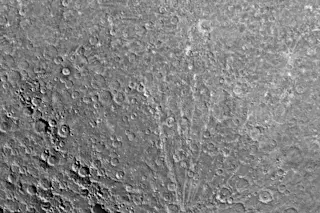Near the moon’s poles, crater walls block sunlight from reaching some areas of the surface. In these permanently shadowed regions, temperatures are ghastly cold, which could allow water to exist in the form of ice. But on an airless body like the moon, the constant barrage of meteorites that punch into the soil could mean that near-surface ice is short-lived and thicker deposits of ice are buried deeper.
The moon’s tenuous atmosphere provides little-to-zero protection against meteorite strikes. Instead of burning up, space rocks strike the surface with a lot of energy due to how fast they travel — about 12 miles per second. The impacts create craters and mix layers of soil in a process known as impact gardening.
The impacts also propel debris into the air that falls back and hits the surface. These secondary impacts churn the soil, too. It takes about 100,000 years to thoroughly mix ...














